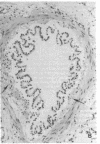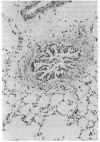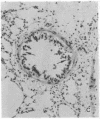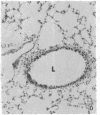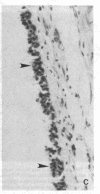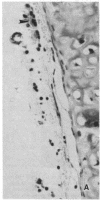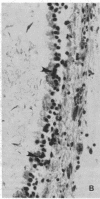Abstract
To determine if constituents of cotton plants might play a role in byssinosis by injuring pulmonary epithelium, we added extracts of cotton dust, green bract, and field-dried bract to human A549 and rat type II pneumocytes. Injury was measured as pneumocyte lysis and detachment, and inhibition of protein synthesis. Extracts of cotton dust and field-dried bract produced significant dose- and time-dependent lysis and detachment of both target cells, while green bract extract was less damaging. Extracts treated with polyvinylpolypyrrolidone to remove tannins produced significantly less injury. In contrast, purified 5,7,3',4'-tetrahydroxy-flavan 3,4-diol (THF), a tannin in cotton dust and bract, caused substantial cell damage. Field-dried bract extract and THF also produced dose-dependent inhibition of pneumocyte protein synthesis. Endotoxin levels did not correlate with observed injury. THF added to rat tracheal explants caused epithelial disruption and desquamation, whereas endotoxin did not. Instillation of cotton dust and field-dried bract extract in rat lungs produced disruption of bronchial epithelium and smooth muscle constriction, while polyvinylpolypyrrolidone-treated cotton dust extract produced no injury. These findings suggest that extracts of cotton plants are toxic to alveolar, tracheal, and bronchial epithelium and that THF or other tannins may be the responsible agents.
Full text
PDF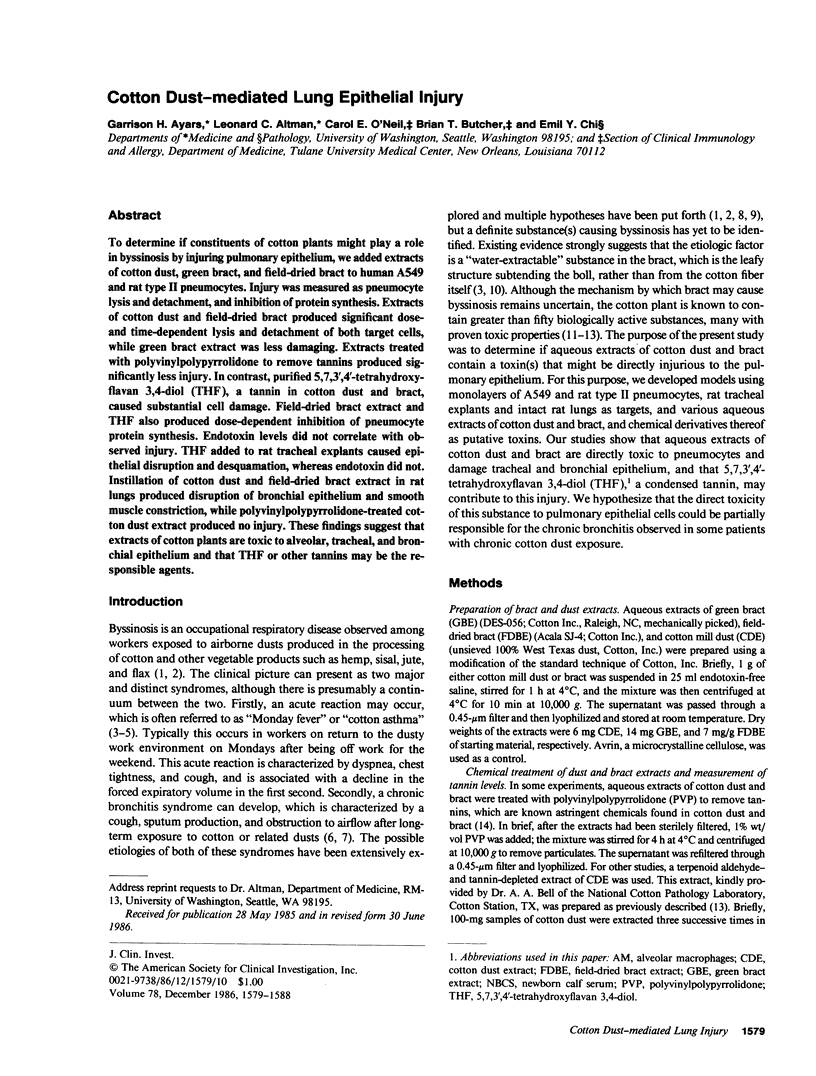
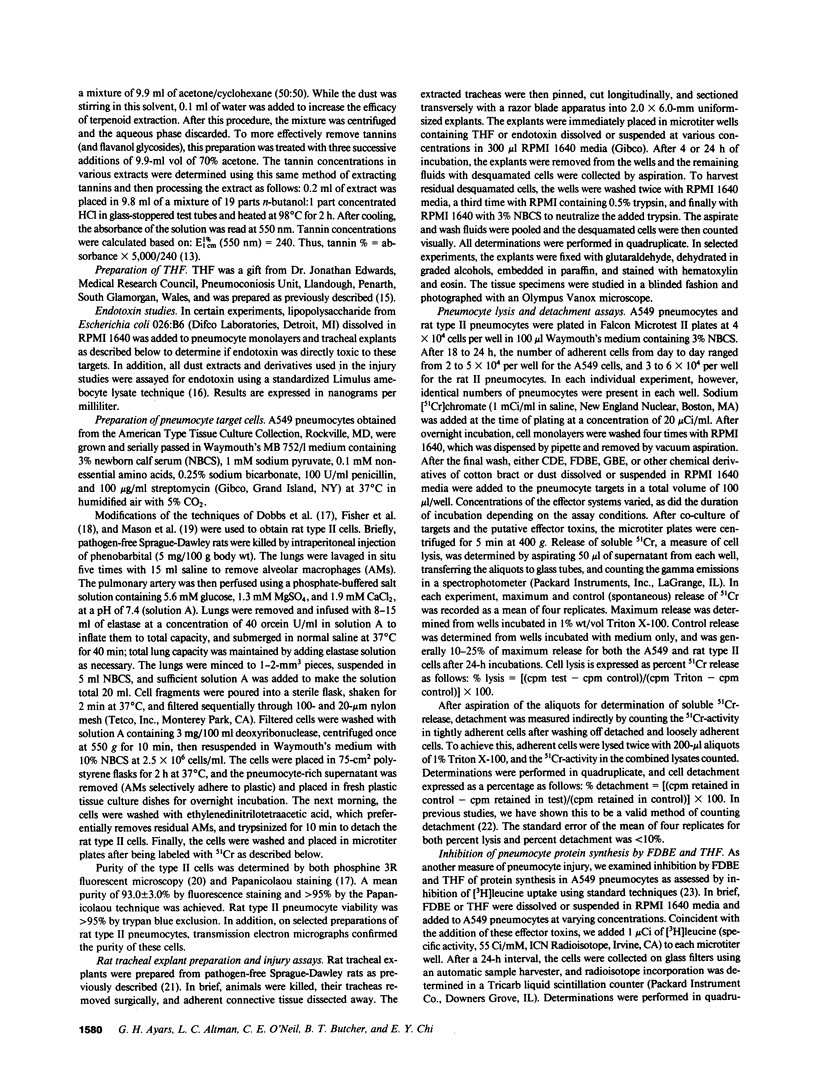
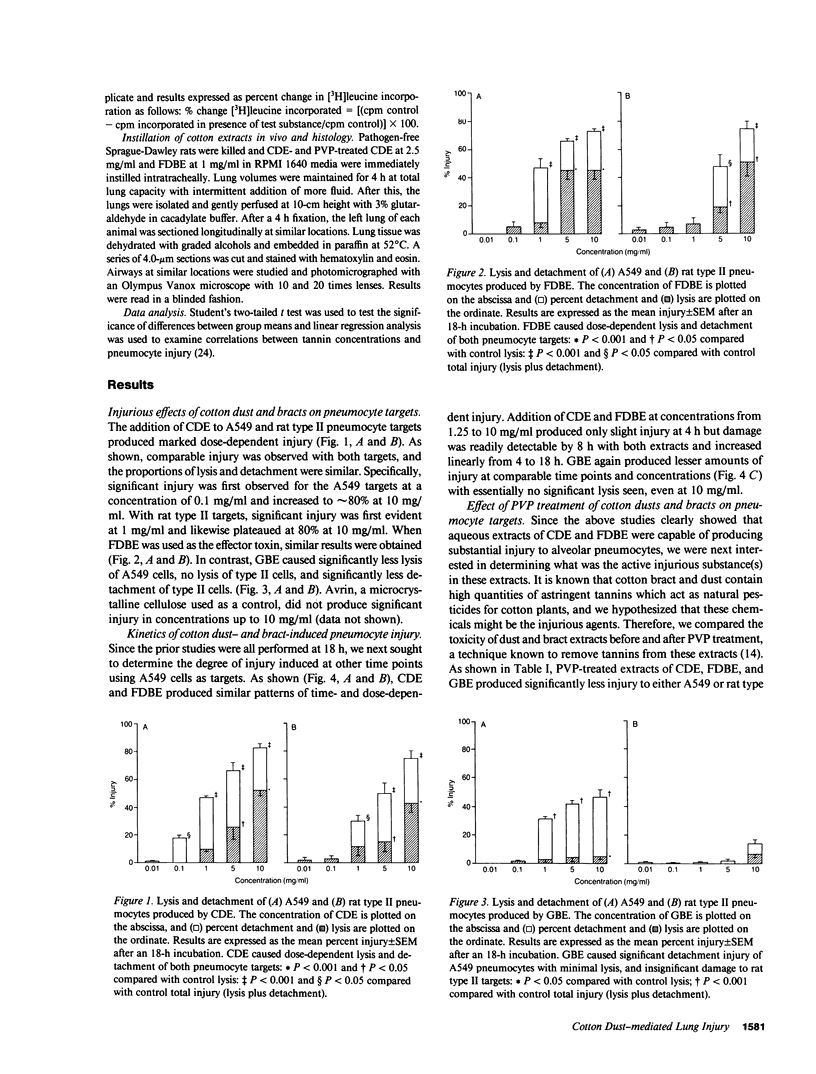
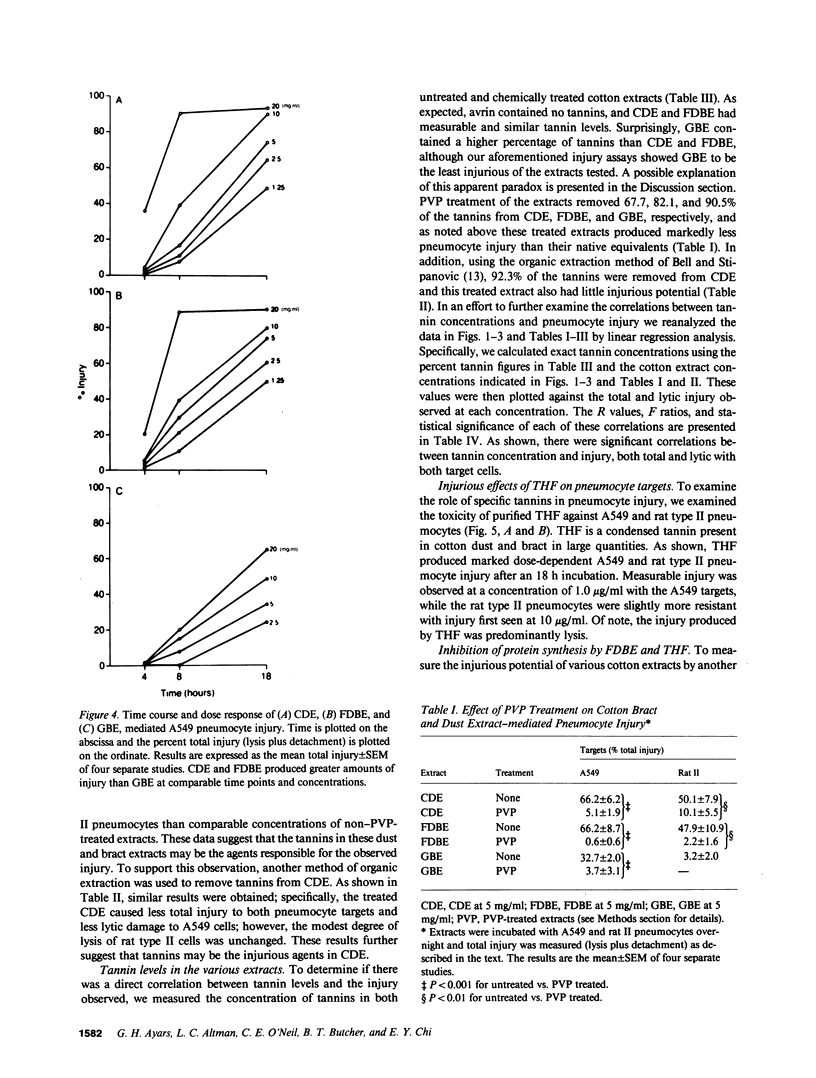
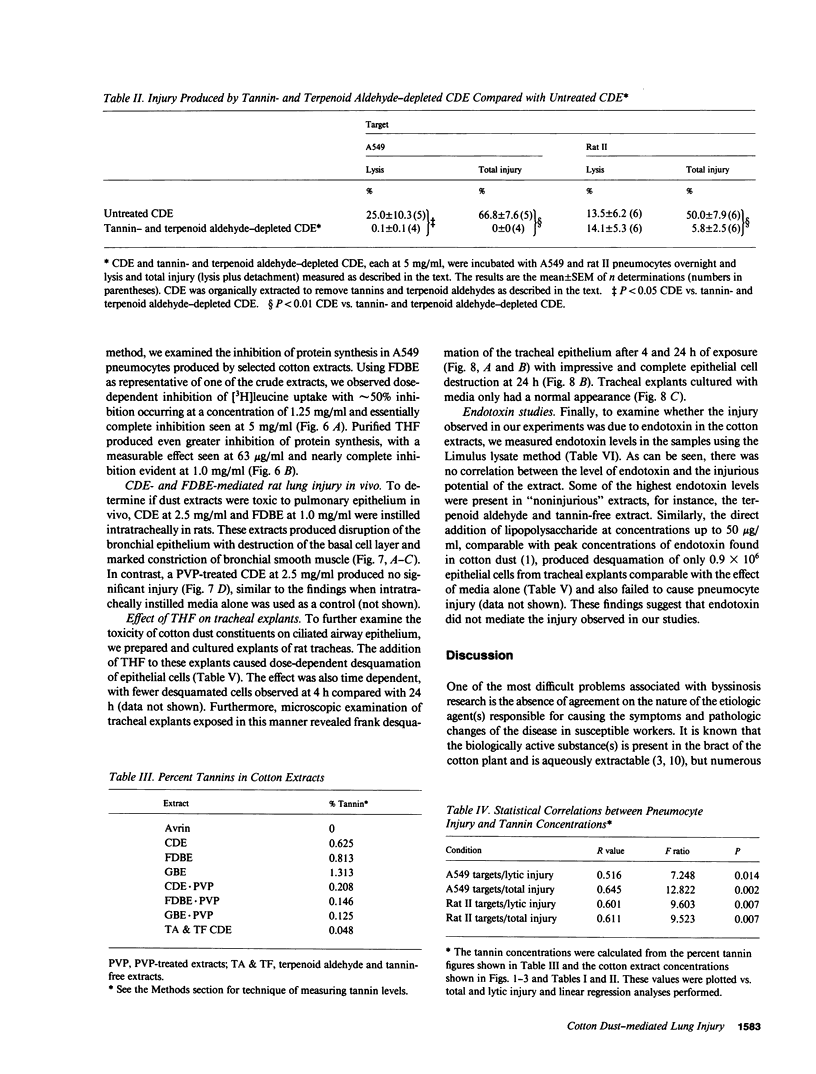
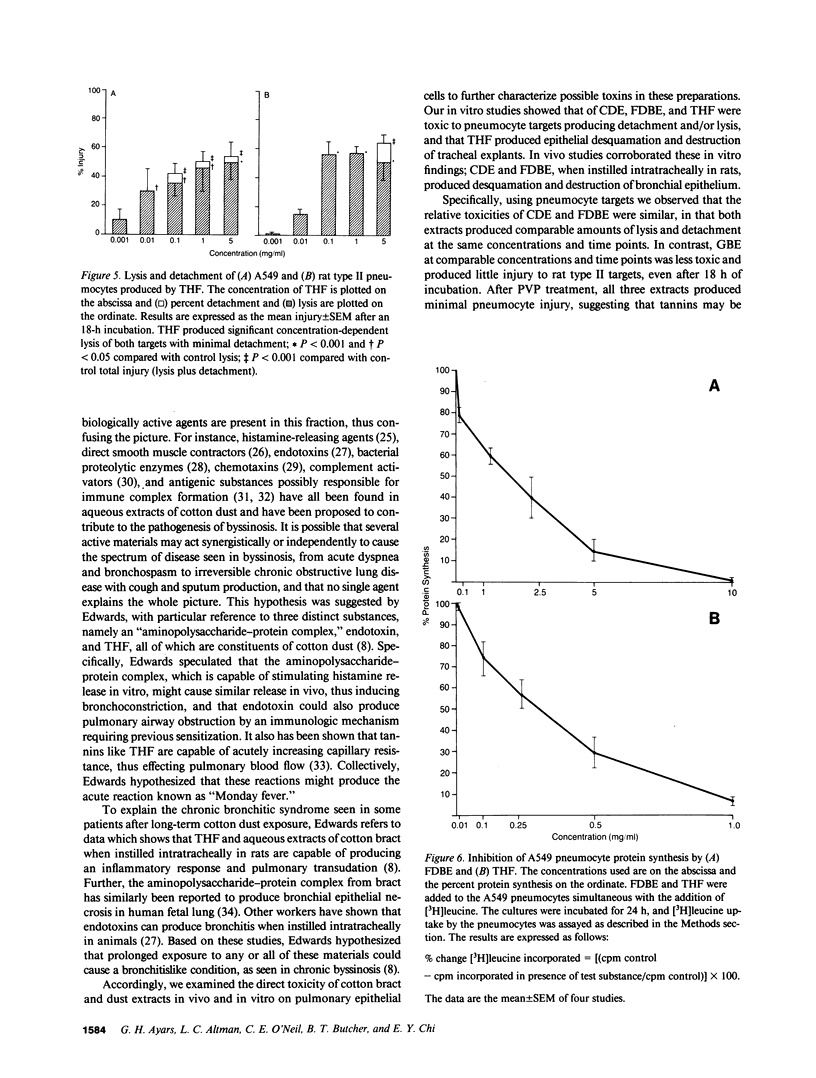
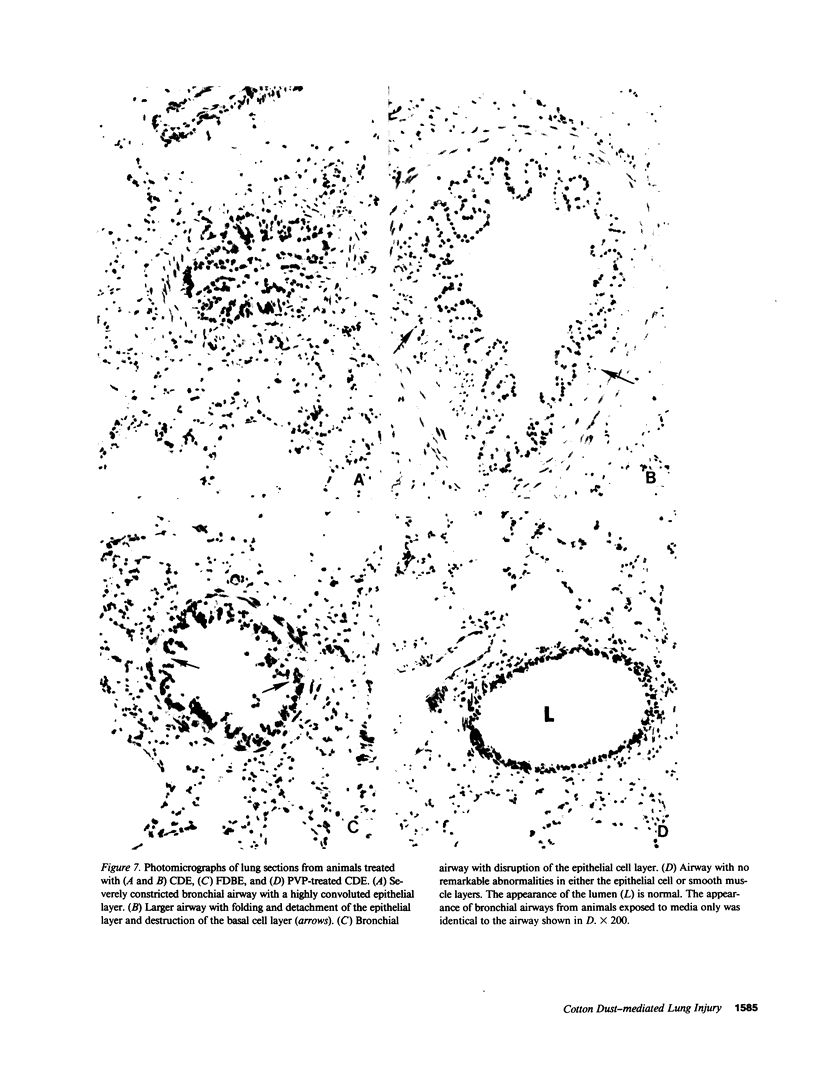
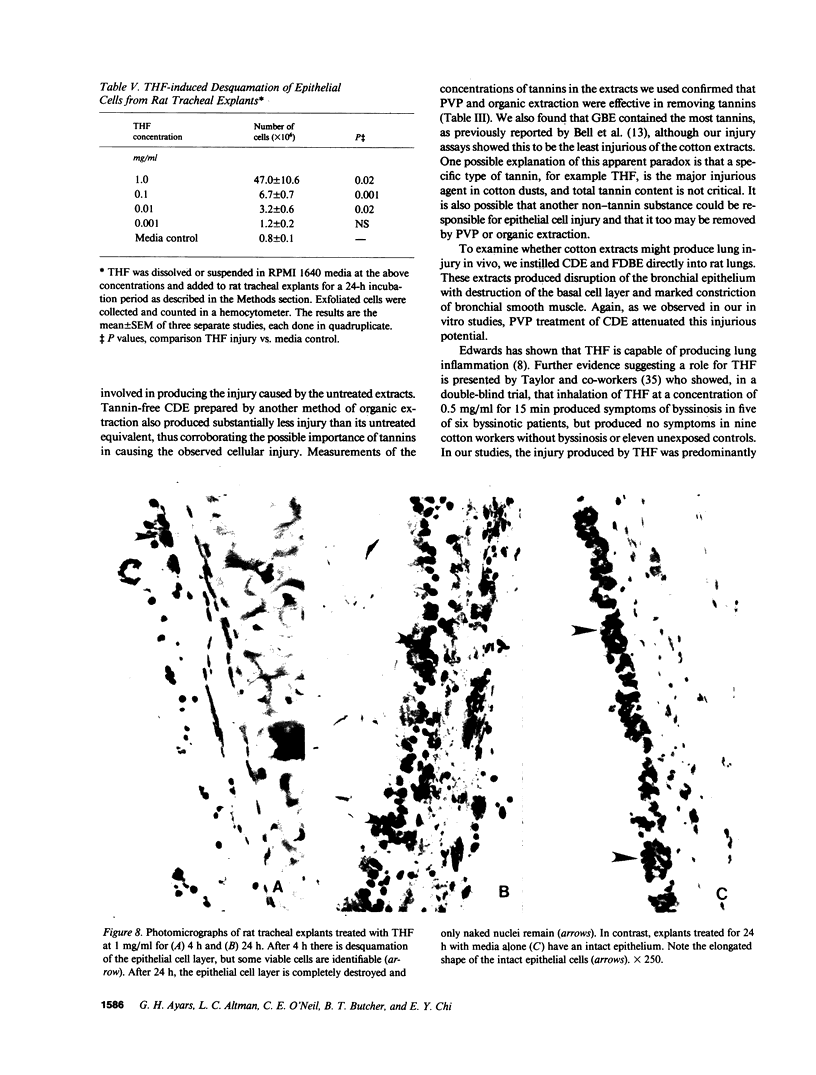
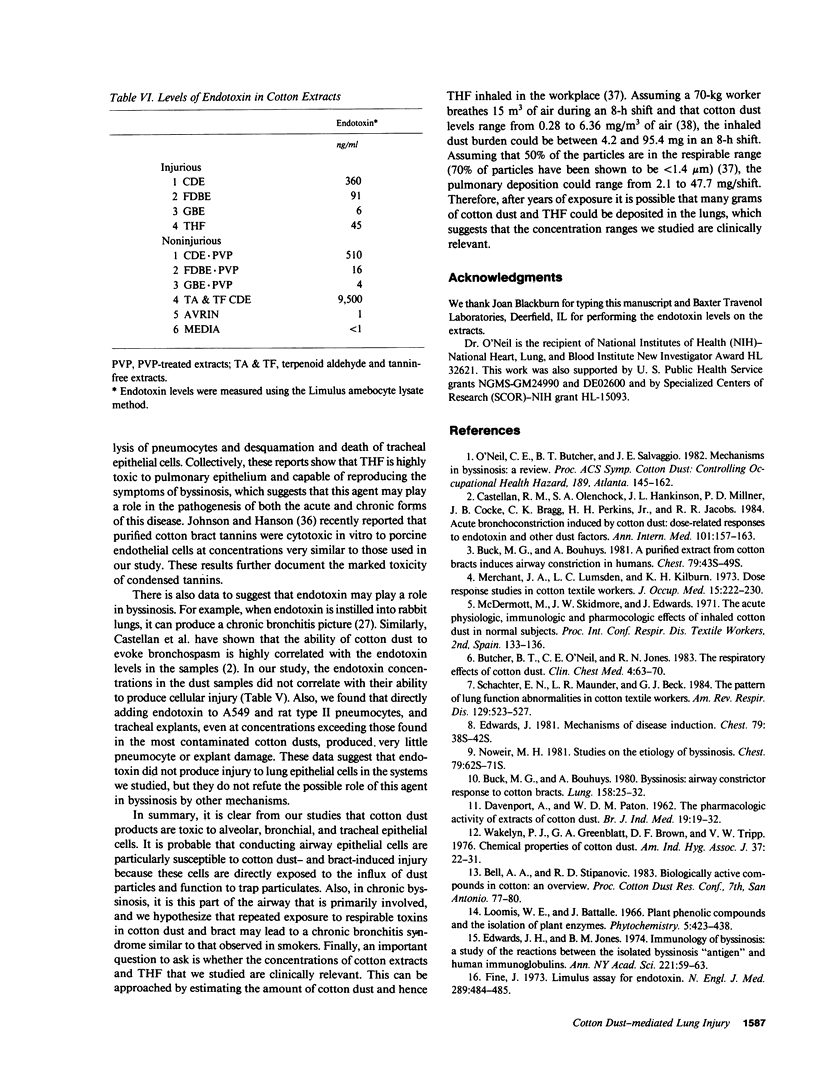
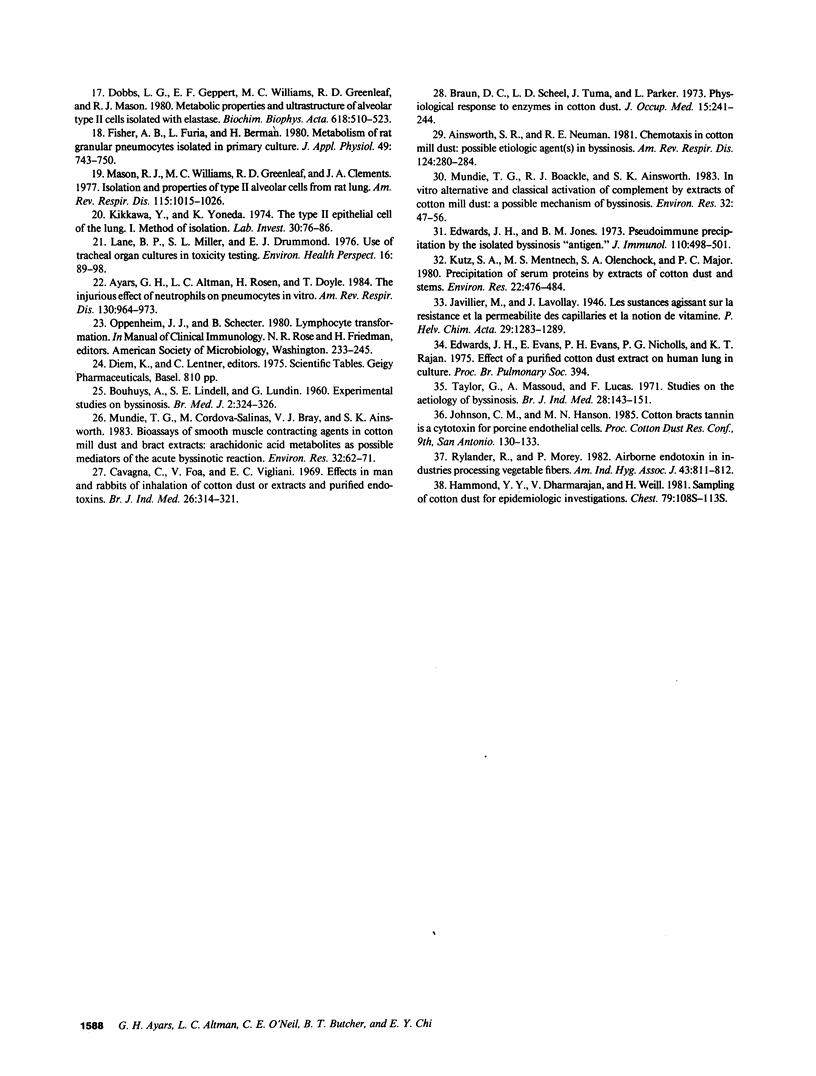
Images in this article
Selected References
These references are in PubMed. This may not be the complete list of references from this article.
- Ainsworth S. K., Neuman R. E. Chemotaxins in cotton mill dust: possible etiologic agent(s) in byssinosis. Am Rev Respir Dis. 1981 Sep;124(3):280–284. doi: 10.1164/arrd.1981.124.3.280. [DOI] [PubMed] [Google Scholar]
- Ayars G. H., Altman L. C., Rosen H., Doyle T. The injurious effect of neutrophils on pneumocytes in vitro. Am Rev Respir Dis. 1984 Jun;129(6):964–973. doi: 10.1164/arrd.1984.129.6.964. [DOI] [PubMed] [Google Scholar]
- BOUHUYS A., LINDELL S. E., LUNDIN G. Experimental studies on byssinosis. Br Med J. 1960 Jan 30;1(5169):324–326. doi: 10.1136/bmj.1.5169.324. [DOI] [PMC free article] [PubMed] [Google Scholar]
- Braun D. C., Scheel L. D., Tuma J., Parker L. Physiological response to enzymes in cotton dust: a preliminary report. J Occup Med. 1973 Mar;15(3):241–244. [PubMed] [Google Scholar]
- Buck M. G., Bouhuys A. A purified extract from cotton bracts induces airway constriction in humans. Chest. 1981 Apr;79(4 Suppl):43S–49S. doi: 10.1378/chest.79.4_supplement.43s. [DOI] [PubMed] [Google Scholar]
- Buck M. G., Bouhuys A. Byssinosis: airway constrictor response to cotton bracts. Lung. 1980;158(1):25–32. doi: 10.1007/BF02713699. [DOI] [PubMed] [Google Scholar]
- Butcher B. T., O'Neil C. E., Jones R. N. The respiratory effects of cotton dust. Clin Chest Med. 1983 Jan;4(1):63–70. [PubMed] [Google Scholar]
- Castellan R. M., Olenchock S. A., Hankinson J. L., Millner P. D., Cocke J. B., Bragg C. K., Perkins H. H., Jr, Jacobs R. R. Acute bronchoconstriction induced by cotton dust: dose-related responses to endotoxin and other dust factors. Ann Intern Med. 1984 Aug;101(2):157–163. doi: 10.7326/0003-4819-101-2-157. [DOI] [PubMed] [Google Scholar]
- Cavagna G., Foà V., Vigliani E. C. Effects in man and rabbits of inhalation of cotton dust or extracts and purified endotoxins. Br J Ind Med. 1969 Oct;26(4):314–321. doi: 10.1136/oem.26.4.314. [DOI] [PMC free article] [PubMed] [Google Scholar]
- DAVENPORT A., PATON W. D. The pharmacological activity of extracts of cotton dust. Br J Ind Med. 1962 Jan;19:19–32. doi: 10.1136/oem.19.1.19. [DOI] [PMC free article] [PubMed] [Google Scholar]
- Dobbs L. G., Geppert E. F., Williams M. C., Greenleaf R. D., Mason R. J. Metabolic properties and ultrastructure of alveolar type II cells isolated with elastase. Biochim Biophys Acta. 1980 Jun 23;618(3):510–523. doi: 10.1016/0005-2760(80)90270-2. [DOI] [PubMed] [Google Scholar]
- Edwards J. H., Jones B. M. Immunology of byssinosis: a study of the reactions between the isolated byssinosis "antigen" and human immunoglobulins. Ann N Y Acad Sci. 1974;221:59–63. doi: 10.1111/j.1749-6632.1974.tb28199.x. [DOI] [PubMed] [Google Scholar]
- Edwards J. H., Jones B. M. Pseudoimmune precipitation by the isolated byssinosis "antigen". J Immunol. 1973 Feb;110(2):498–502. [PubMed] [Google Scholar]
- Edwards J. International conference on byssinosis. Mechanisms of disease induction. Chest. 1981 Apr;79(4 Suppl):38S–43S. [PubMed] [Google Scholar]
- Fisher A. B., Furia L., Berman H. Metabolism of rat granular pneumocytes isolated in primary culture. J Appl Physiol Respir Environ Exerc Physiol. 1980 Oct;49(4):743–750. doi: 10.1152/jappl.1980.49.4.743. [DOI] [PubMed] [Google Scholar]
- Hammad Y. Y., Dharmarajan V., Weill H. Sampling of cotton dust for epidemiologic investigations. Chest. 1981 Apr;79(4 Suppl):108S–113S. doi: 10.1378/chest.79.4_supplement.108s. [DOI] [PubMed] [Google Scholar]
- Kikkawa Y., Yoneda K. The type II epithelial cell of the lung. I. Method of isolation. Lab Invest. 1974 Jan;30(1):76–84. [PubMed] [Google Scholar]
- Kutz S. A., Mentnech M. S., Olenchock S. A., Major P. C. Precipitation of serum proteins by extracts of cotton dust and stems. Identification of beta-lipoprotein and production of specific antibodies. Environ Res. 1980 Aug;22(2):476–484. doi: 10.1016/0013-9351(80)90159-0. [DOI] [PubMed] [Google Scholar]
- Lane B. P., Miller S. L., Drummond E. J. Use of tracheal organ cultures in toxicity testing. Environ Health Perspect. 1976 Aug;16:89–98. doi: 10.1289/ehp.761689. [DOI] [PMC free article] [PubMed] [Google Scholar]
- Mason R. J., Williams M. C., Greenleaf R. D., Clements J. A. Isolation and properties of type II alveolar cells from rat lung. Am Rev Respir Dis. 1977 Jun;115(6):1015–1026. doi: 10.1164/arrd.1977.115.6.1015. [DOI] [PubMed] [Google Scholar]
- Merchant J. A., Lumsden J. C., Kilburn K. H., O'Fallon W. M., Ujda J. R., Germino V. H., Jr, Hamilton J. D. Dose response studies in cotton textile workers. J Occup Med. 1973 Mar;15(3):222–230. [PubMed] [Google Scholar]
- Mundie T. G., Boackle R. J., Ainsworth S. K. In vitro alternative and classical activation of complement by extracts of cotton mill dust: a possible mechanism in the pathogenesis of byssinosis. Environ Res. 1983 Oct;32(1):47–56. doi: 10.1016/0013-9351(83)90190-1. [DOI] [PubMed] [Google Scholar]
- Mundie T. G., Cordova-Salinas M., Bray V. J., Ainsworth S. K. Bioassays of smooth muscle contracting agents in cotton mill dust and bract extracts: arachidonic acid metabolites as possible mediators of the acute byssinotic reaction. Environ Res. 1983 Oct;32(1):62–71. doi: 10.1016/0013-9351(83)90192-5. [DOI] [PubMed] [Google Scholar]
- Rylander R., Morey P. Airborne endotoxin in industries processing vegetable fibers. Am Ind Hyg Assoc J. 1982 Nov;43(11):811–812. doi: 10.1080/15298668291410611. [DOI] [PubMed] [Google Scholar]
- Schachter E. N., Maunder L. R., Beck G. J. The pattern of lung function abnormalities in cotton textile workers. Am Rev Respir Dis. 1984 Apr;129(4):523–527. [PubMed] [Google Scholar]
- Taylor G., Massoud A. A., Lucas F. Studies on the aetiology of byssinosis. Br J Ind Med. 1971 Apr;28(2):143–151. doi: 10.1136/oem.28.2.143. [DOI] [PMC free article] [PubMed] [Google Scholar]
- Wakelyn P. J., Greenblatt G. A., Brown D. F., Tripp V. W. Chemical properties of cotton dust. Am Ind Hyg Assoc J. 1976 Jan;37(1):22–31. doi: 10.1080/0002889768507403. [DOI] [PubMed] [Google Scholar]



